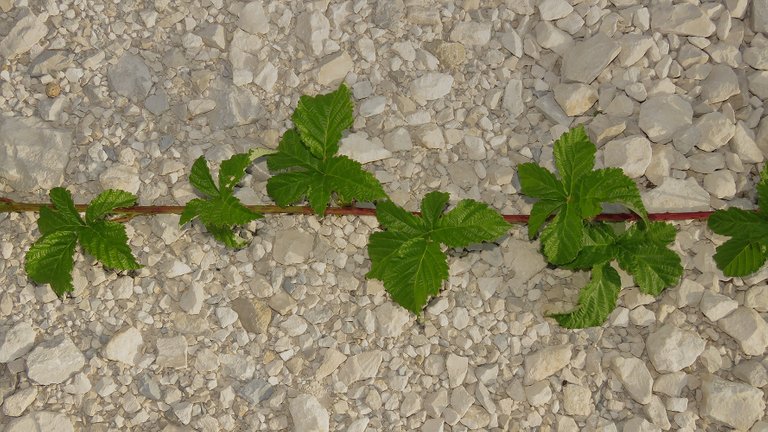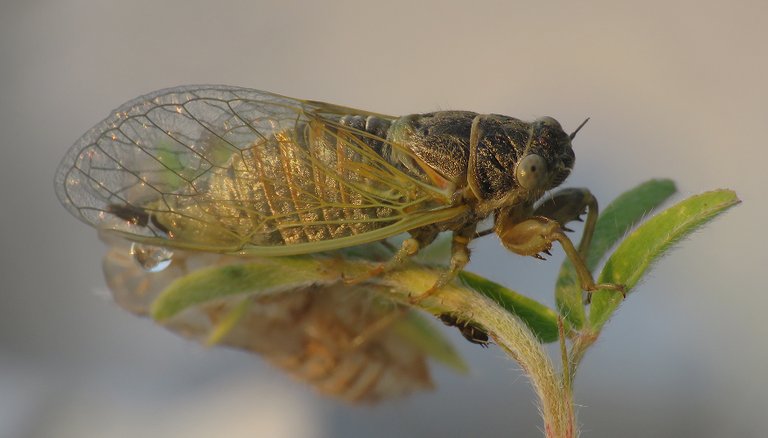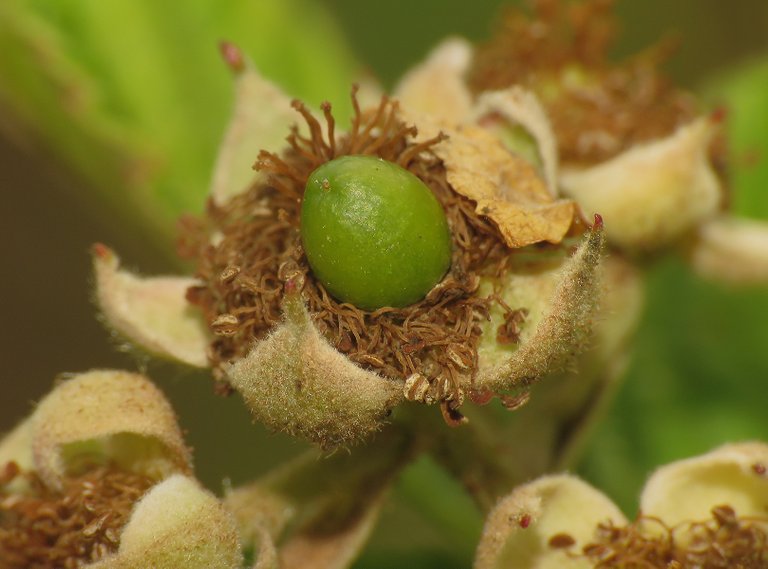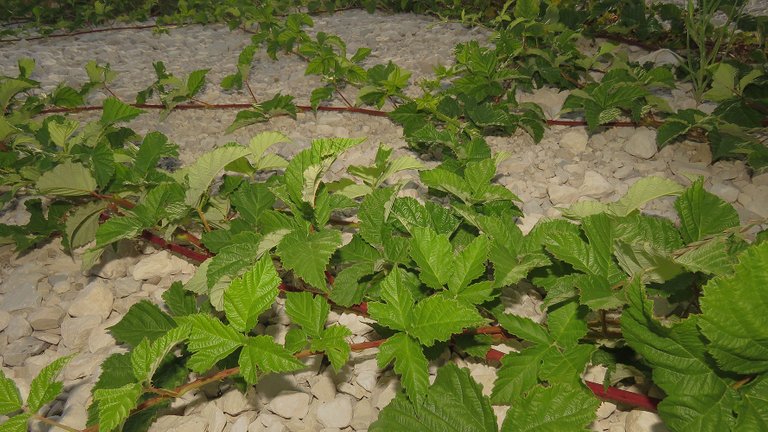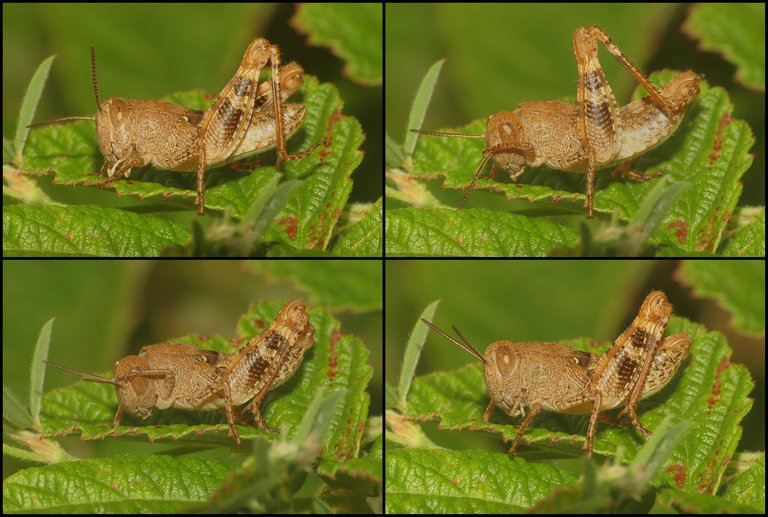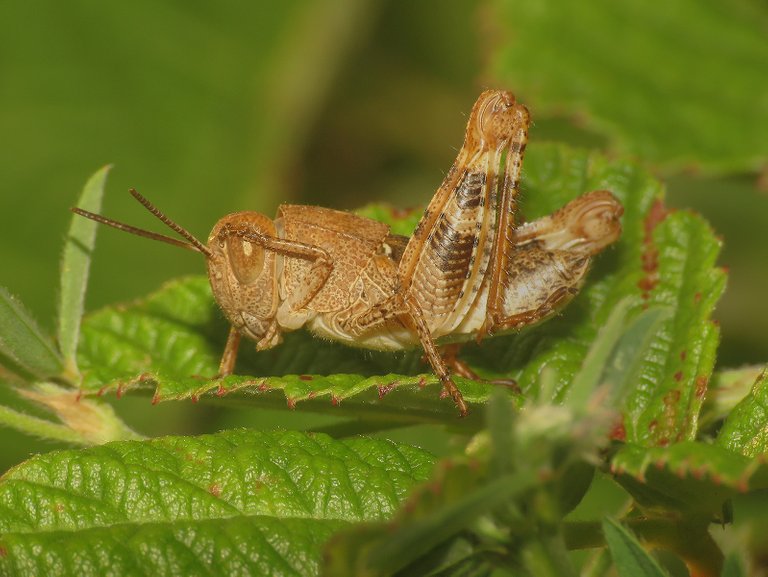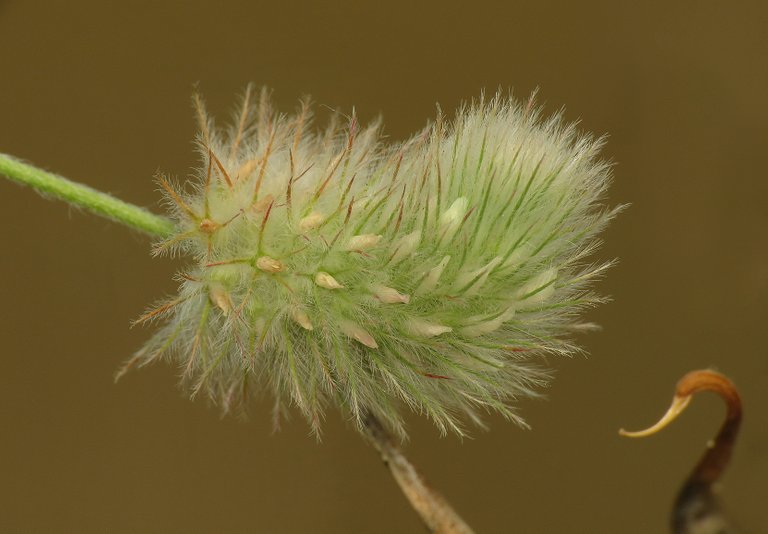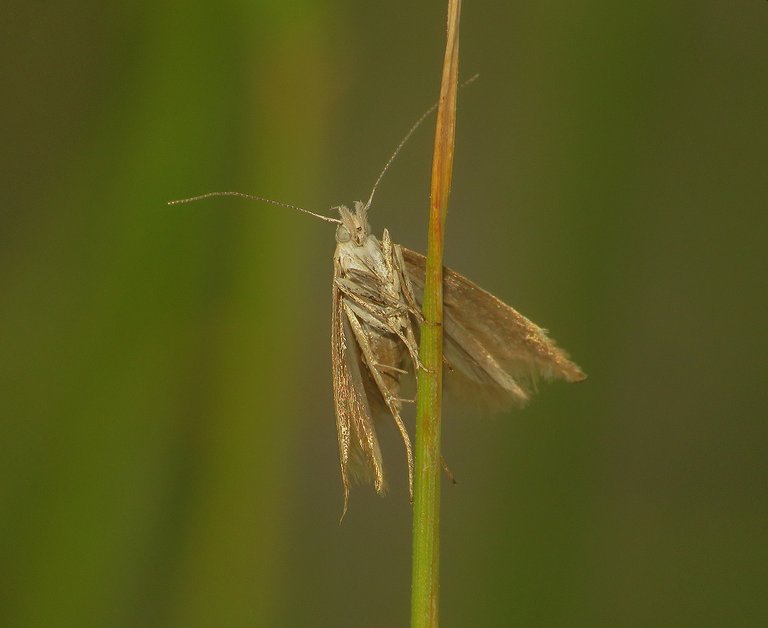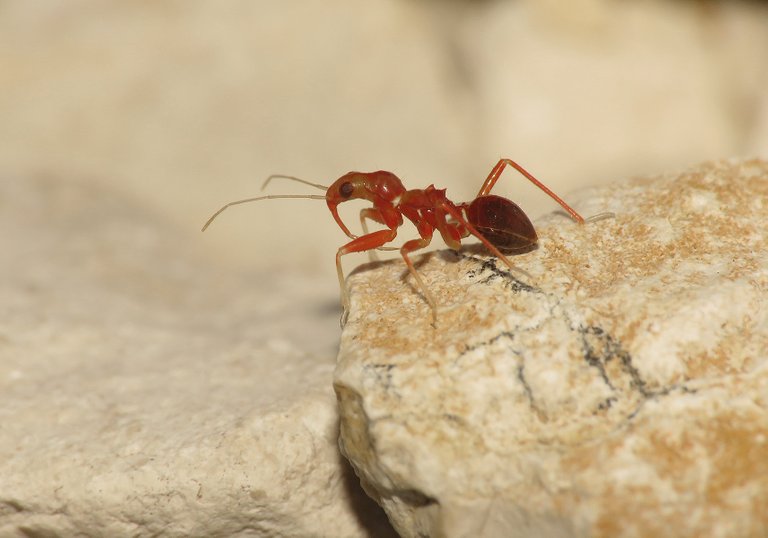Back then on the 16th of June this year, when the days were mostly sunny and temperatures were pretty high, I spent the entire afternoon in the rural area about twenty-thirty kilometers north of my hometown.
I visit that locality fairly often in springtime and summer so posting about it could become repetitive. To avoid that, I often focus on some particular microhabitat that, while sharing the plants and animals with the surroundings, has a different look and feel when seen in photographs.
Here you can see an adult cicada that has recently, probably an hour or two ago, exited the nymphal exoskeleton ...
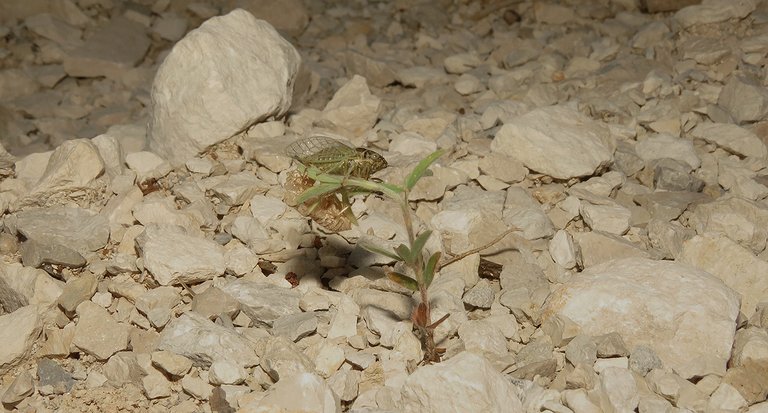
... and was photographed while resting on one of the small plants that has found its way through the gravel.

This time, I mean, on the 16th of June 2022, I had plenty of fun exploring the gravel-covered circle by the side of the road between the towns of Vodnjan and Svetvinchenat, the leftover of some work that was done on that road a couple of months or a couple of years earlier. This mound of reddish soil looks like an island in that small sea of gravel.
Rubus ulmifolius blackberries grew low across the terrain creating what looked like a series of tentacles.

The minuscule springtail, shown in this photograph ...
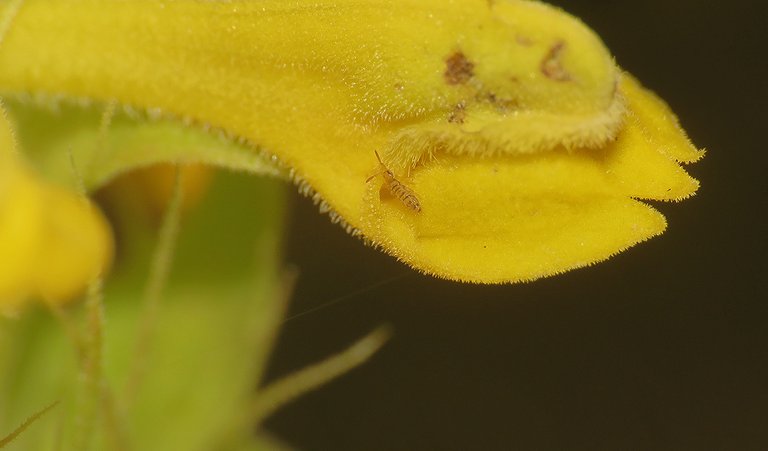
... was running around the yellow flower ...
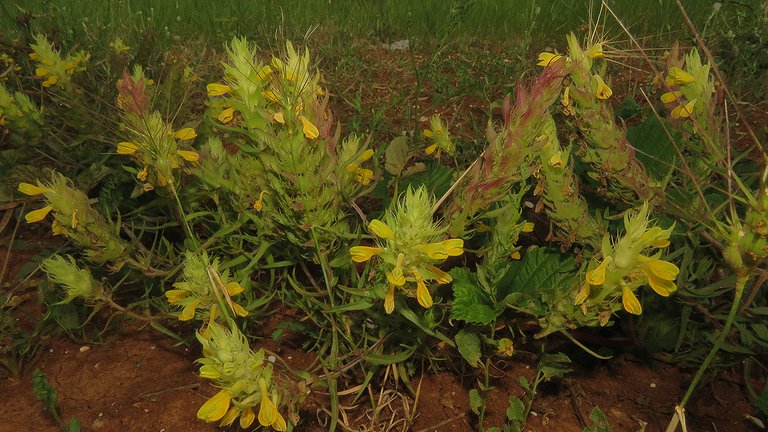
... of the Melampyrum arvense plant that grew on the edge of the gravel.
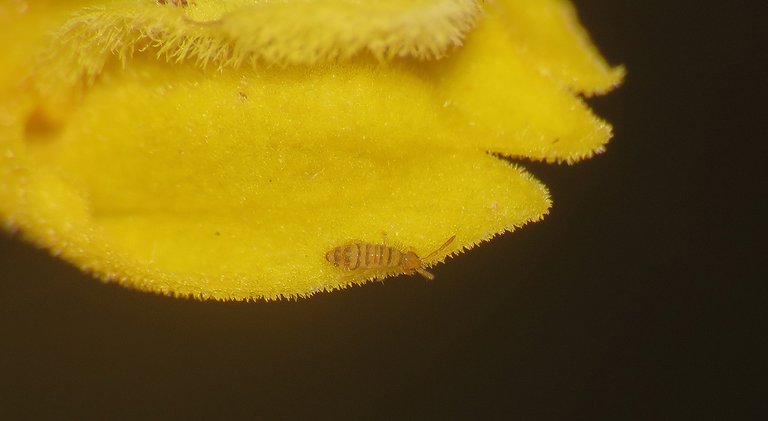
When it comes to the springtail, this is the Entomobrya multifasciata, a species from the Entomobryidae family.

While I was following the springtail, a small bee landed on the top of the nearby Avena fatua grass. This is the Lasioglossum malachurum, a bee from the Halictidae family.

All the Melampyrum arvense flowers that I ever saw here in Istra, the peninsula on which I live, were yellow ...
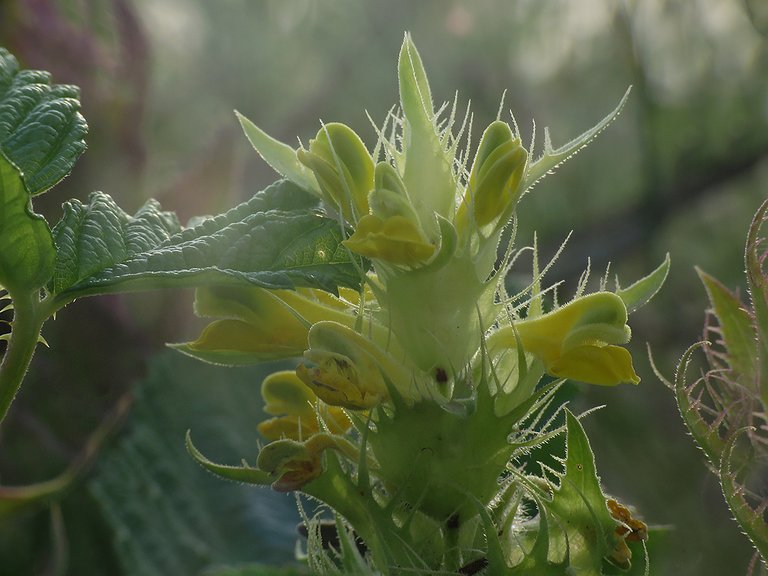
... and the rest of those plants was always pale green, occasionally with a bit of pink on the top of the bracts, the specialized leaves that along with the flowers form the reproductive structure of the plant ...
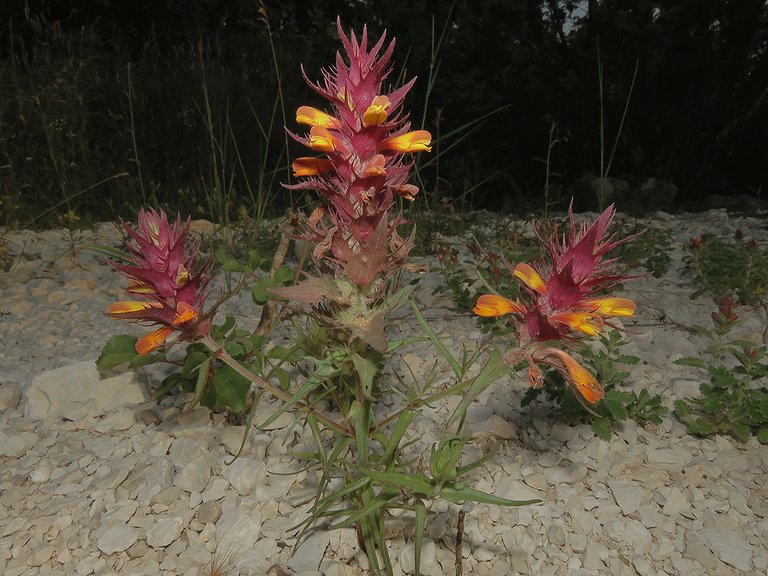
... but on the 16th of June, on the gravel, I found a colorful variation that looked like a different species at first sight.
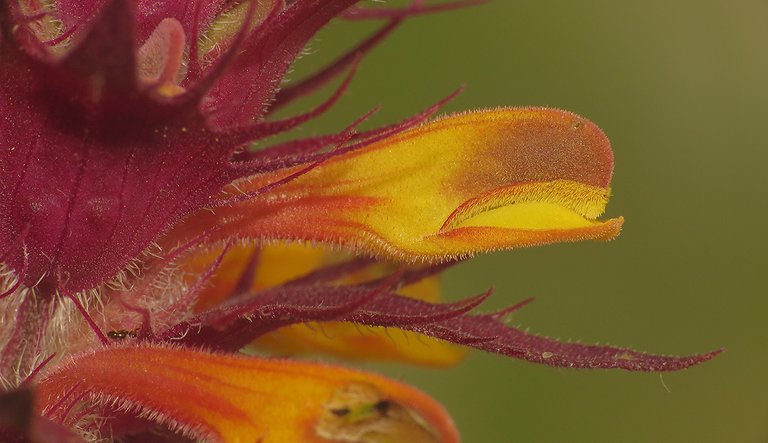
The flowers were colored in a mix of yellow, orange, and red ...
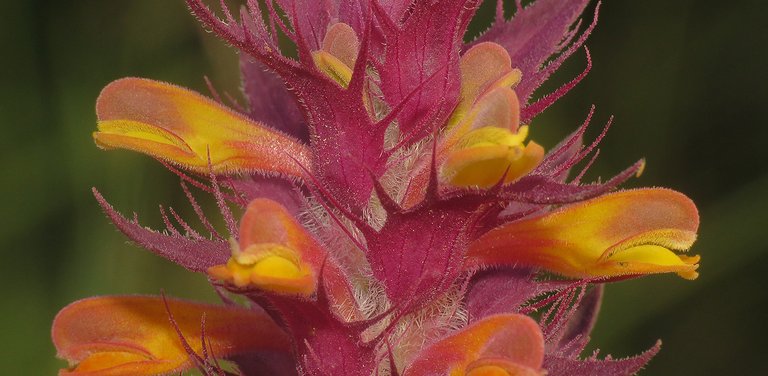
... while the bracts were dark red bordering with magenta. Or magenta bordering with a darker shade of red.
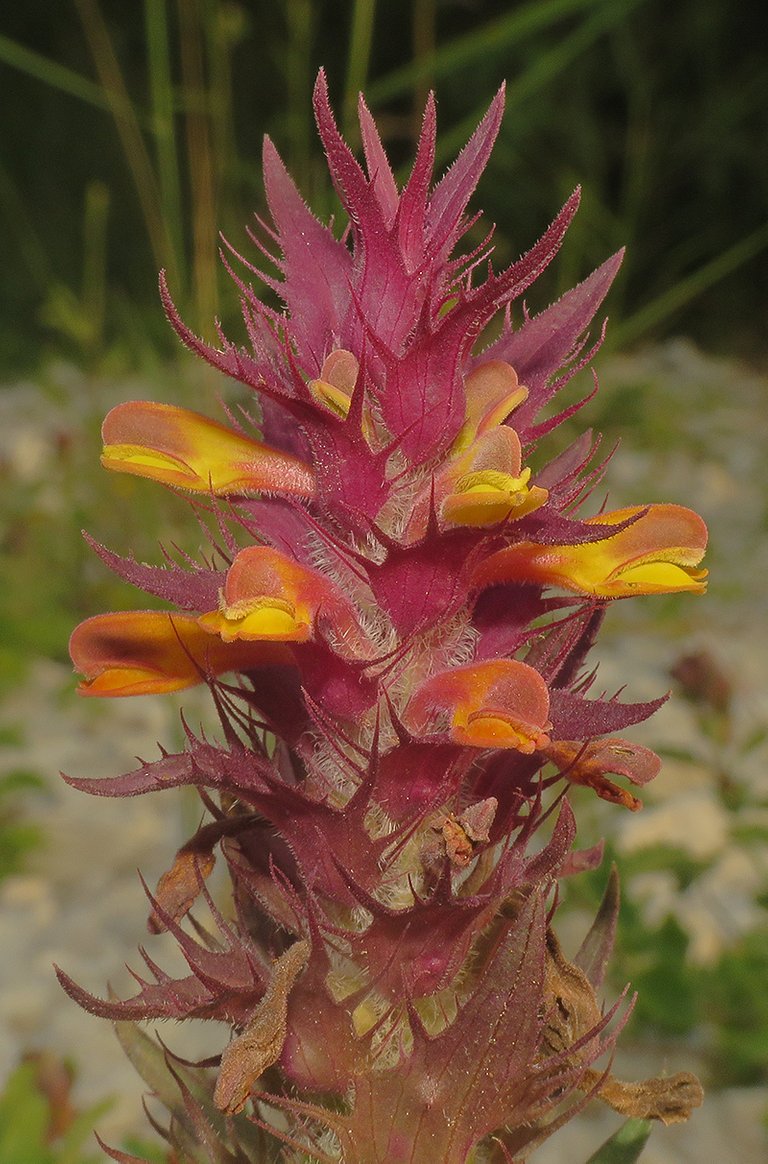
I didn't know the name or anything else about this plant back then when the photographs were taken. I found that stuff out only today while preparing the post. Interestingly, the Melampyrum arvense colorful variation with plenty of red & magenta, was the first one to appear in the Internet search, and only a couple of photographs were showing the green-yellow version, suggesting that the latter is actually the unusual one. Quite the opposite of what my experience may suggest.
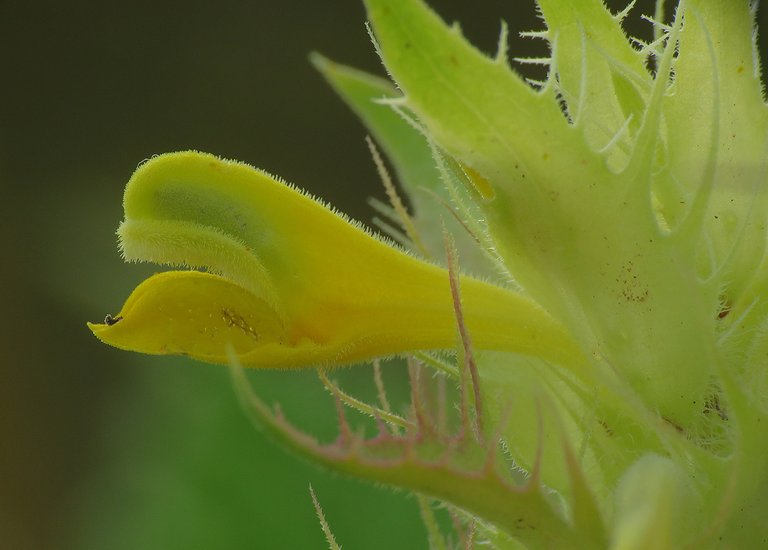
Melampyrum arvense is a plant from the Orobanchaceae family and like most of its Orobanchaceae relatives, it's a parasite. These plants grow attached to the roots of grasses and some other herbaceous plants. Melampyrum arvense cannot flourish without a host that provides nutrients.

The cicada is the first insect that appeared in this post but was actually the last one to be photographed back then in June. Late in the afternoon. When the evening was near and I was almost ready to go home. The name of the species isTettigettula pygmea.
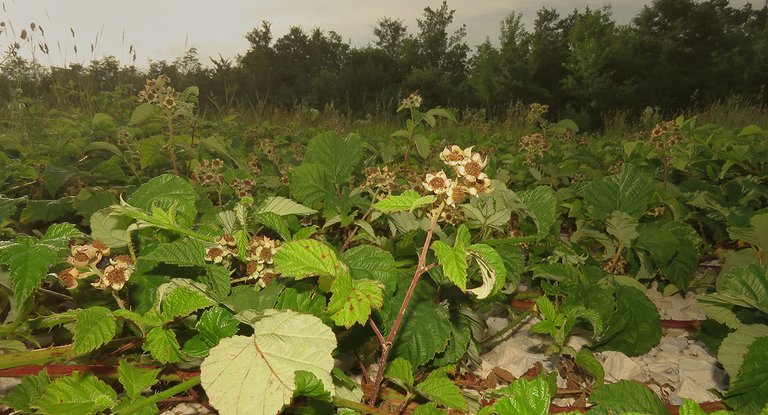
On the Rubus ulmifolius, the flowers had lost their petals ...
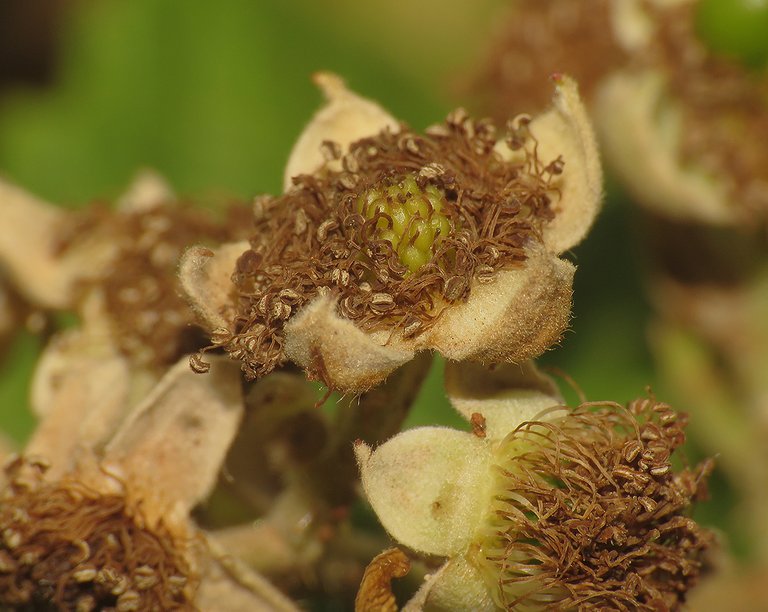
... and the fruits started developing. Among the usual berries ...
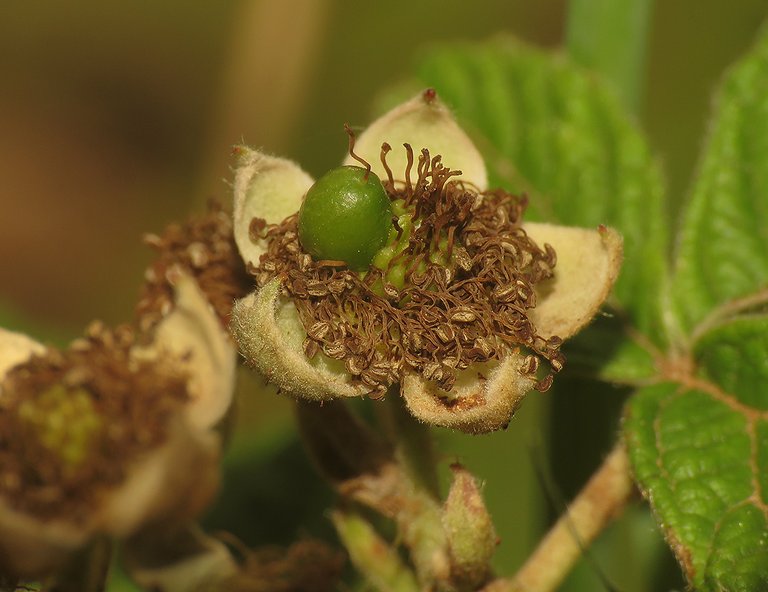
... I found a couple of unusual ones.
On these weird fruits, one of the drupelets that form the berry was much larger than the others.
Among the leaves of the plant ...
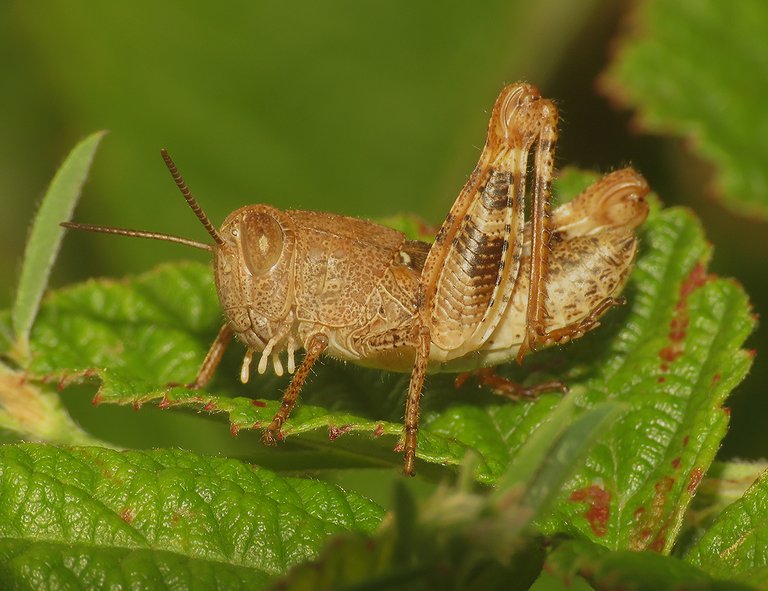
... I found a grasshopper.
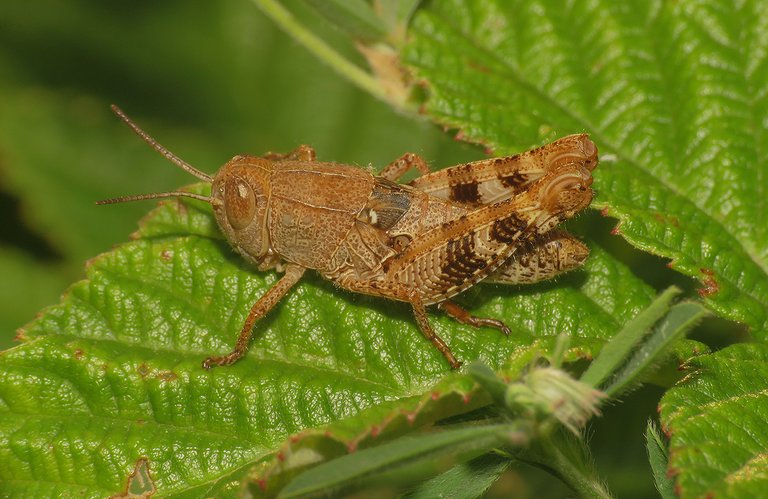
This is the young, wingless nymph ...
... of the Calliptamus italicus grasshopper.
In some of these photographs, the grasshopper is cleaning its eyes.
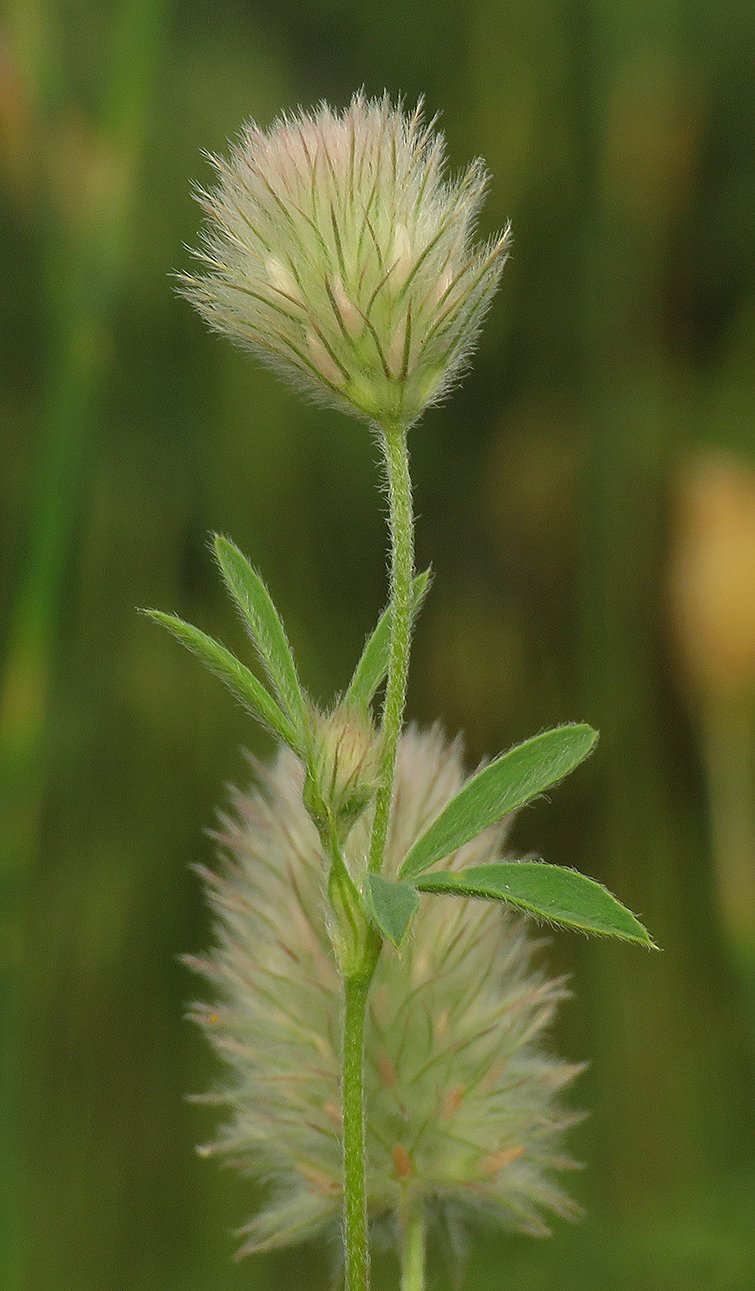
This photograph was taken in the meadow around the area covered with gravel.
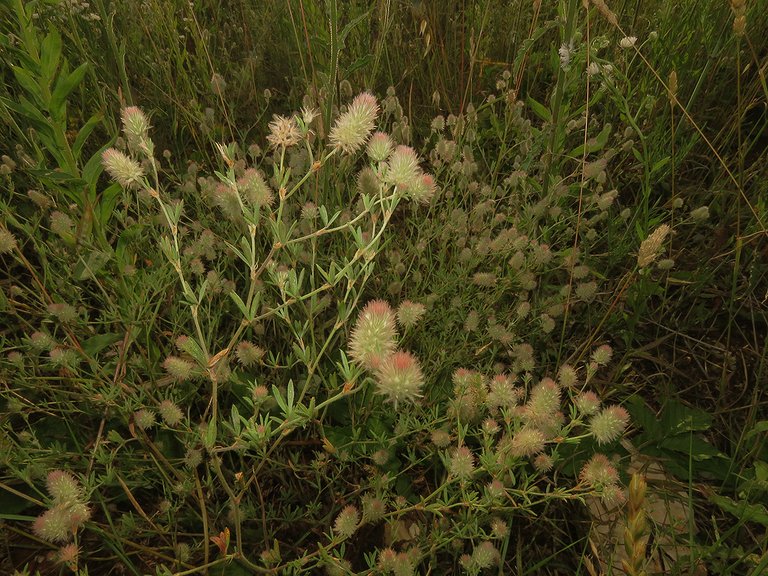
The vegetation there was dense and taller.
When I found these beautiful, fluffy inflorescences ...

... of the Trifolium arvense plants ...

... I knew I'll take quite a few Trifolium arvense - themed photographs.

These things are like the definition of herbal cuteness.
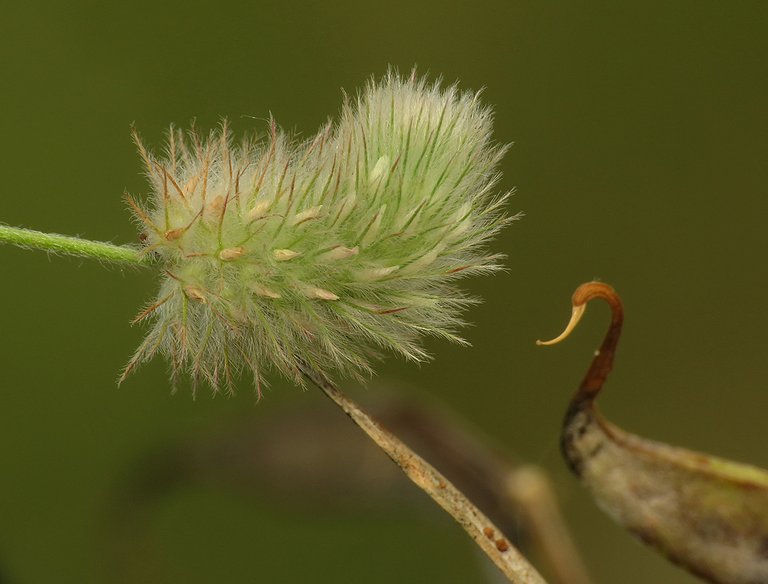
Especially when in the earlier stages of development.

Here you can take another wider look at the intricate growth of these plants.
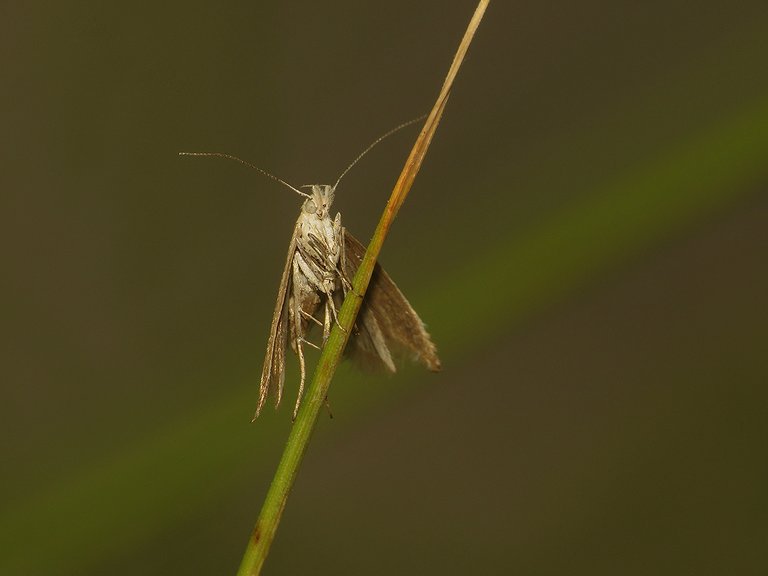
A bit further, on the edge of the area covered with gravel ...
... I came across a small moth that was resting on the blade of grass. Can't tell you the name or anything else about this species.

These interesting flowers were photographed nearby.
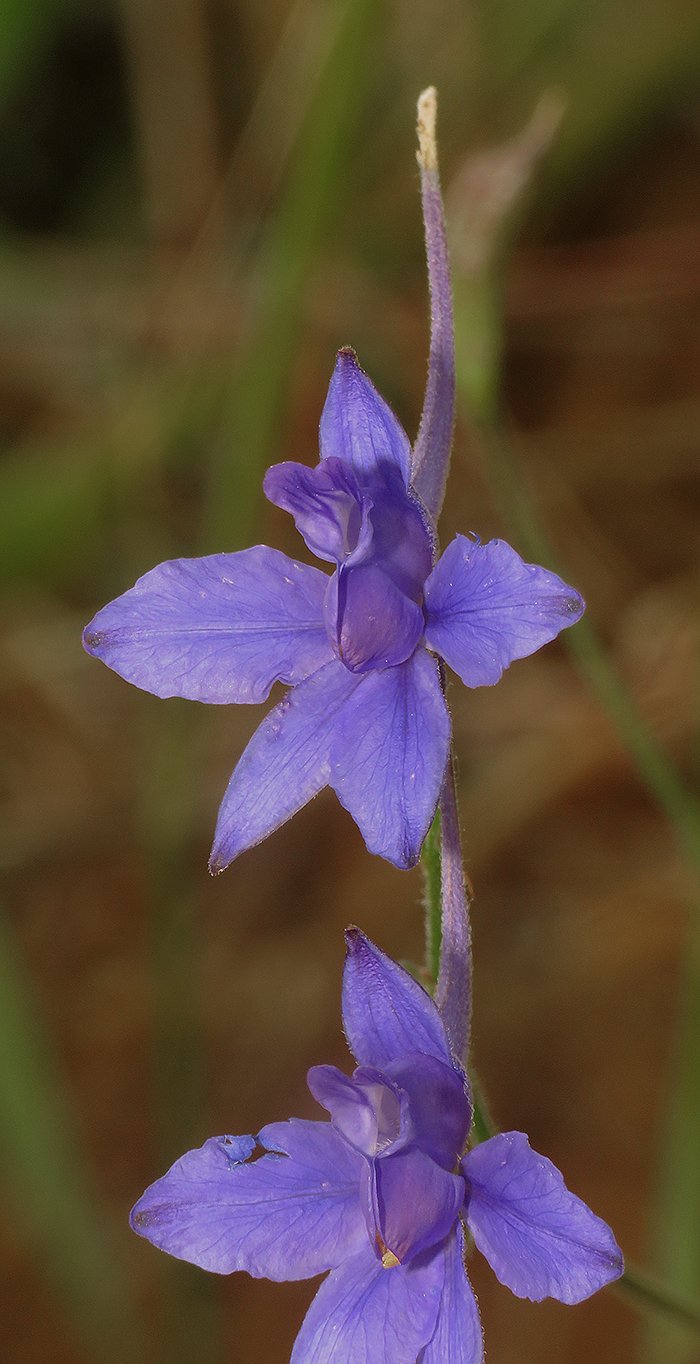
Here you can see them from another angle.
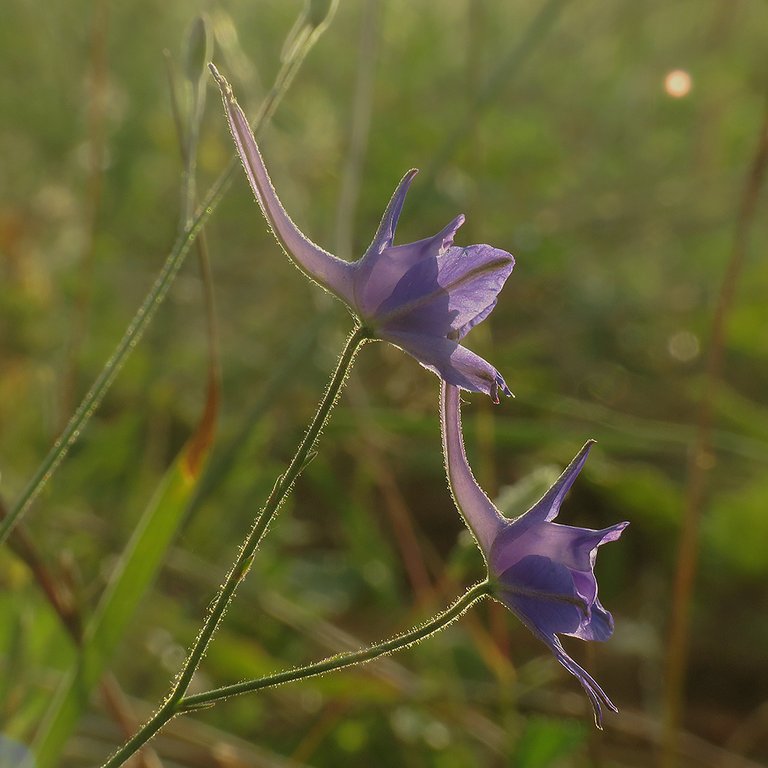
They belong to the Consolida regalis plant.
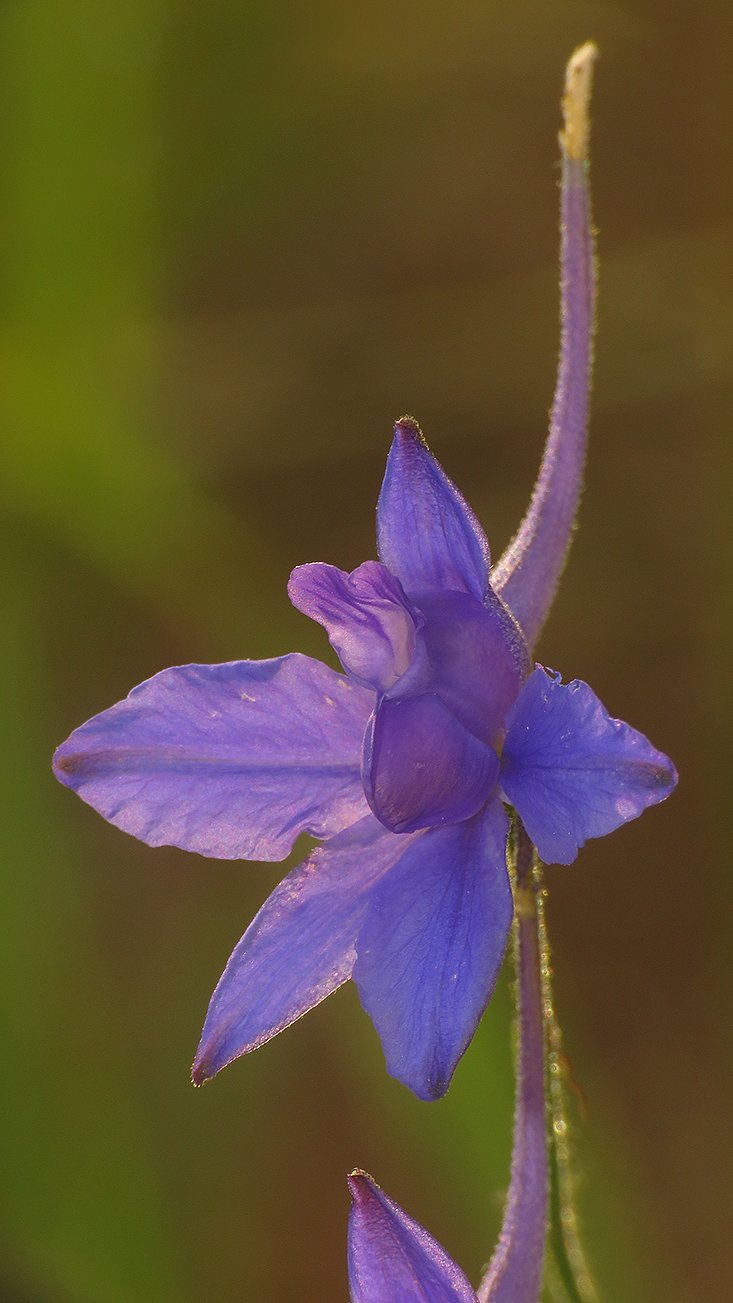
I never saw this plant twenty-thirty kilometers south of there, in the seaside area where I live.

Here you can see a bit of the scenery from the perspective of a Melampyrum arvense that grew on the mound for earth shown at the beginning of the post.
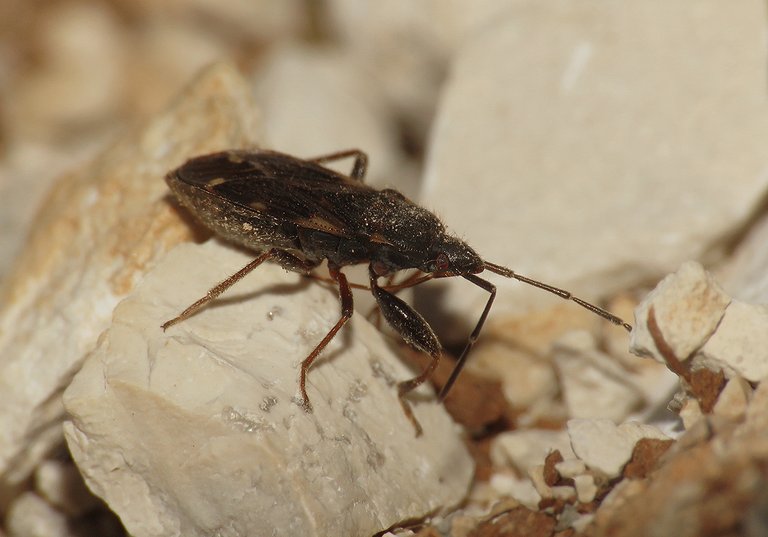
Not far from there ...

... a bug from the Lygaeidae family was running across the gravel.

The bug was very fast so getting these photographs wasn't easy. The name of the species is Eremocoris podagricus. When the bug found shelter somewhere in between little stones ...
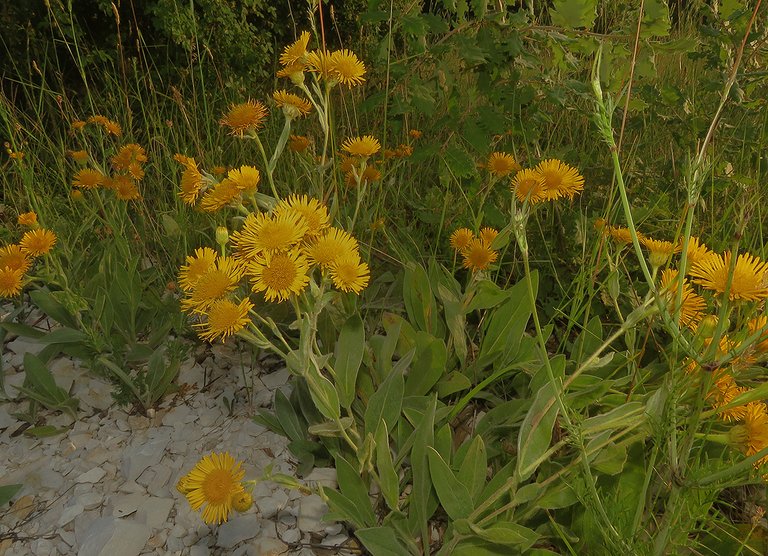
... I got out of the macro view to photograph these Inula oculus-christi flowers, and then ...
... I noticed another bug, so it was macro time again. This is the very young, early instar nymph of the Himacerus mirmicoides, a predatory bug from the Nabidae family. Only at these early stages of their life do Himacerus mirmicoides bugs mimic the ants, the adults have a very different appearance.
If you have any doubt that this nymph does a great job at mimicking ants 😆 just put the photograph through the google image search and you'll see.
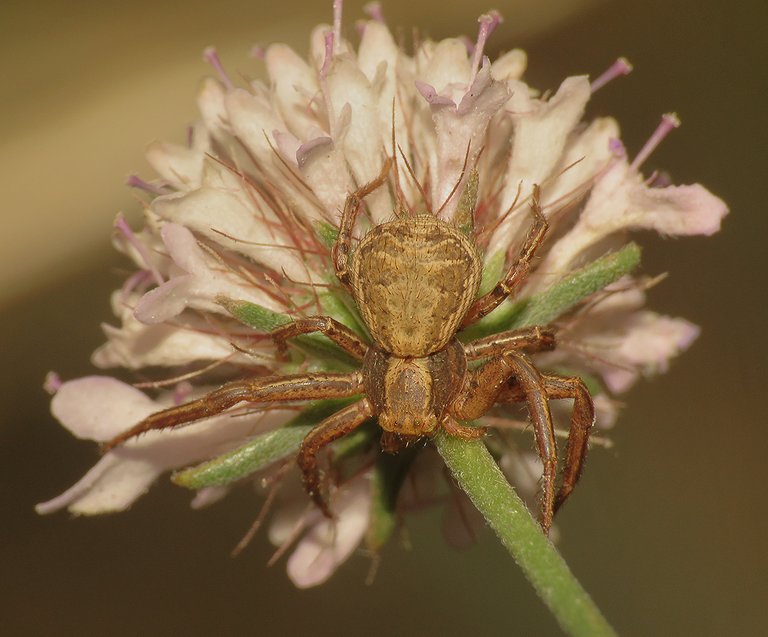
Not far from the bug, the Xysticus cristatus crab spider was waiting in ambush, well - hidden under the flowerhead of the Scabiosa atropurpurea plant.
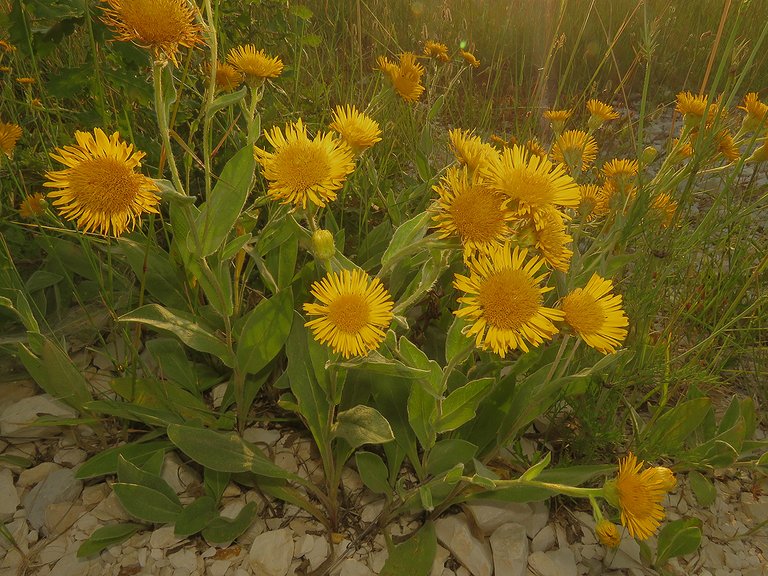
The Inula oculus-christi flowers looked great in the light of the late afternoon, so I took another Inula oculus-christ-themed shot, and then, after a short hesitation ...
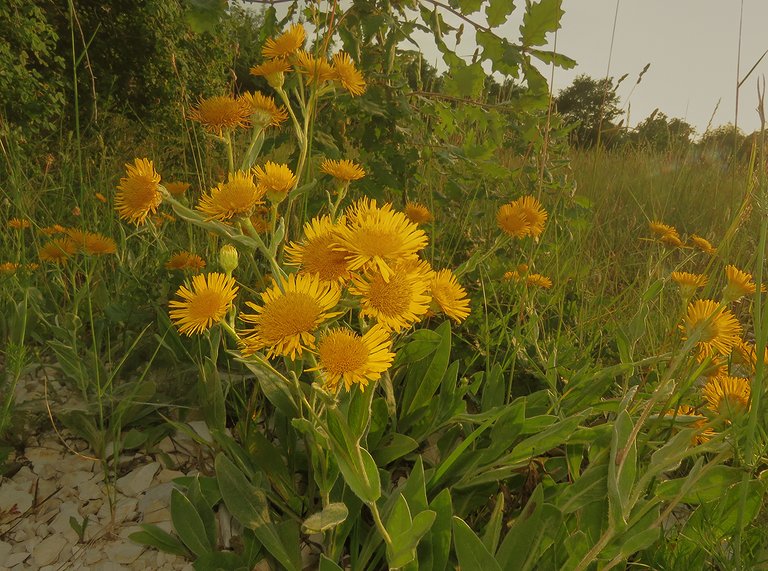
... I took another one.
When I photographed these Allium vineale flowerheads, the evening was almost there.
I was ready to go home, but I found a cicada that recently finished the molting. The scene looked great in the subdued light ...

... so I stayed a bit longer.
If you enlarge this last picture by clicking on it, you can take a better look at the scene and the small Plagiolepis pygmaea ant on the stem of the plant, under the cicada. And that's it. The journey across the gravel ends here.
The following links will take you to the sites with more information about some of the protagonists of this post. I found some stuff about them there.
https://en.wikipedia.org/wiki/Rubus_ulmifolius
https://en.wikipedia.org/wiki/Melampyrum_arvense
https://www.google.hr/search?q=Melampyrum+arvense&sxsrf=ALiCzsY0HzRMl9VhmJWLabnzdA3qjtxs2w:1669314448902&source=lnms&tbm=isch&sa=X&ved=2ahUKEwi02_r1uMf7AhVKhv0HHdipCEwQ_AUoAXoECAEQAw&biw=1669&bih=730&dpr=1
https://www.naturespot.org.uk/node/132018
https://en.wikipedia.org/wiki/Lasioglossum_malachurum
https://www.cicadasong.eu/cicadettinae/tettigettula-pygmea.html
https://en.wikipedia.org/wiki/Calliptamus_italicus
https://en.wikipedia.org/wiki/Trifolium_arvense
https://www.britishbugs.org.uk/heteroptera/Lygaeidae/eremocoris_podagricus.html
https://en.hortipedia.com/Inula_oculus-christi
https://en.wikipedia.org/wiki/Himacerus_mirmicoides
https://en.wikipedia.org/wiki/Xysticus_cristatus
AS ALWAYS IN THESE POSTS ON HIVE, THE PHOTOGRAPHS ARE MY WORK - THE END.
